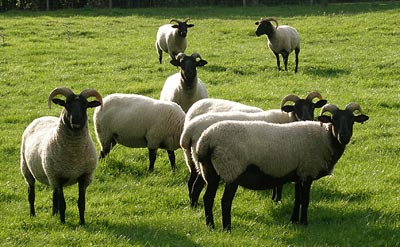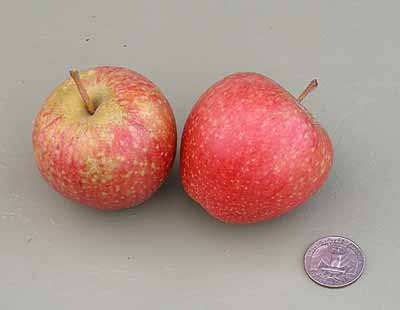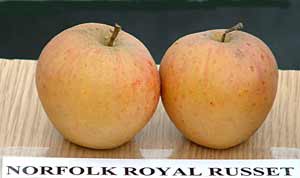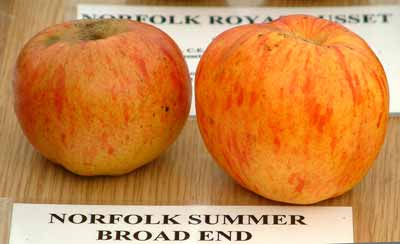
The Norfolk Horn is found in Norfolk, Suffolk and Cambridgeshire and is one of the ancient "Heath" breeds. The Norfolk Horn was used along with Southdown in the development of the much more prolific Suffolk breed. It is a medium sized animal with a long body and legs. The face and legs are black or dark brown and free of wool. The fleece is white with new born lambs being mottled. Both sexes are horned and the horn pattern is an open spiral. The breed was nearly extinct in 1973. The result was initially referred to as New Norfolk Horn but in 1984 the name reverted to Norfolk Horn. The breed is still endangered.

The Norfolk Horn is found in Norfolk, Suffolk and Cambridgeshire and is one of the ancient "Heath" breeds. The Norfolk Horn was used along with Southdown in the development of the much more prolific Suffolk breed. It is a medium sized animal with a long body and legs. The face and legs are black or dark brown and free of wool. The fleece is white with new born lambs being mottled. Both sexes are horned and the horn pattern is an open spiral. The breed was nearly extinct in 1973. The result was initially referred to as New Norfolk Horn but in 1984 the name reverted to Norfolk Horn. The breed is still endangered.

A name for Adams' Pearmain, a variety of striped, nutty dessert apple raised in England, probably in Norfolk, or possibly Herefordshire, where it is known as Hanging Pearmain. It is a late season variety, harvested from early- to mid-October in South-East England, is stored and is at its best between November and March. First recorded in 1826 by Mr R Adams.

A variety of good-looking yellow eating apple streaked and flushed blushed with red, found at Wright's Nursery in North Walsham in Norfolk around 1908 and introduced commercially in 1928. This mid-season variety is harvested from early September in South-East England and is at its best from September to December, but the skin can become greasy.

A russeted 'sport' of Norfolk Royal, this is a good-looking yellow eating apple streaked and flushed blushed with red and russet found by Reverend CE Wright in his garden at Burnham Overy Staithe in North Norfolk. It was subsequently introduced in Gloucester at Highfields Nursery in 1983 and received the Royal Horticultural Society Award of Garden Merit. This mid-season variety is harvested from early September in South-East England and is now grown for several farm shops in Norfolk. A nutty tasting russet, it is at its best from September or October to December or January.

A variety of yellow apple streaked and flushed blushed with orange red raised in Norfolk around 1796 and subsequently described in 1831